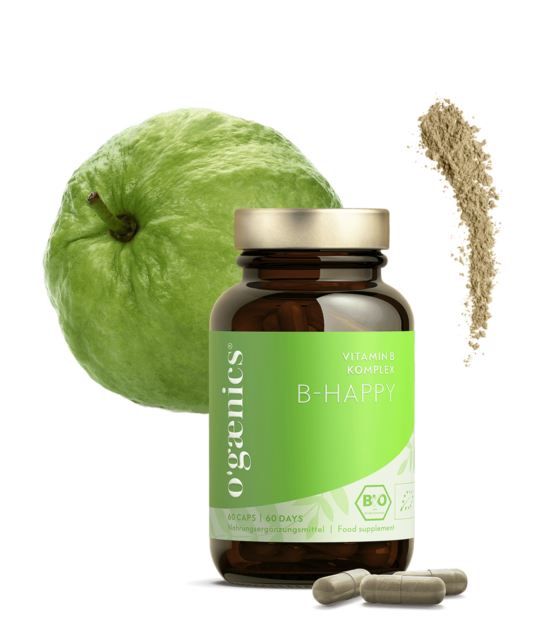Learn about the unexpected factors that could be behind your headaches.
Headaches can greatly affect our daily lives and impact our quality of life. We often initially look for obvious headache triggers such as stress, fatigue or certain foods. But there are also surprising factors that can be headache triggers that you may not have heard about. In this article, we expose ten such triggers that may explain your headaches.
1. nutrient deficiency: the underestimated trigger
One aspect that is often overlooked is the connection between headaches and a deficiency of certain nutrients. In particular, a deficiency of magnesium and vitamin B2 (riboflavin) can cause or worsen headaches. These nutrients play an important role in energy metabolism and nervous system function. If they are missing, this can lead to tension headaches and migraines.
Read our article “Magnesium Deficiency: Causes, Symptoms and Solutions” for more information on the link between magnesium and headaches. If you want to learn more about the connection between migraines and B vitamins, we recommend our article “Migraines and B Vitamins: How these nutrients can help prevent and relieve migraines.” In the article you will learn how B vitamins can reduce the occurrence of migraines and what food sources are rich in these vitamins.
-
Bestseller
Calm A Lama
Plant-based organic magnesium from premium organic green algae extract for muscles and nerves44,90 €1.076,74 € / kg
2. light sensitivity: the invisible headache trigger
Another surprising cause of headaches is light sensitivity. For some people, certain types of light, especially bright, flickering or glaring lights, can trigger headaches. This is called a photophobic headache and can occur in individuals who are susceptible to sensory overstimulation.
Avoiding these light sources, wearing sunglasses with polarized lenses, or adjusting the brightness of screens can help alleviate these headaches. If symptoms persist, it is advisable to consult a doctor to rule out possible eye diseases.
3. dental and jaw problems: The underestimated connection
Have you ever thought that dental and jaw problems could cause headaches? In fact, poor tooth or jaw alignment can lead to tension headaches. If the teeth do not meet properly or there is excessive tension in the jaw muscles, pain can occur in the head and neck area.
A dentist can help identify these problems and recommend appropriate treatments such as fitting dental splints, braces or orthodontic procedures.
4. emotional factors: the hidden influence
Emotional factors such as stress, anxiety, and depression are known for their impact on mental health. But did you know that they can also trigger headaches? Strong emotions can cause tension in the neck and shoulders, which in turn can cause headaches.
It is important to be aware of how emotions can affect our bodies. Relaxation exercises, stress management techniques, and mental health care can help reduce headaches due to emotional factors.
5. weather changes: The atmospheric trigger
It may sound strange, but weather changes can actually trigger headaches. In particular, high air pressure, temperature fluctuations, high humidity or strong winds can cause headaches or even migraine attacks in some people.
This may be because these weather conditions cause changes in oxygenation and blood flow to the brain. By keeping an eye on the weather and taking appropriate precautions, such as wearing a hat or maintaining a stable room temperature, you may be able to prevent headaches due to weather changes.
6. hormonal changes: The cyclical headache trigger
Your reproductive hormones, namely estrogen and progesterone, not only regulate your menstrual cycle, but can also affect chemicals in your brain that can lead to headaches. Hormonal headaches usually occur before your period and may become more severe or frequent during perimenopause. Estrogen dominance, in which the ratio of estrogen to progesterone is disturbed, can cause this.
The good news is that headaches can improve when estrogen levels become more stable, which can be achieved through certain lifestyle and dietary rules, supportive micronutrients, or even hormonal therapy or contraceptives. You can read more about this in our article “Understanding and managing estrogen dominance.”
7. sleep disorders: The nocturnal trigger
Insufficient or disturbed sleep can lead to headaches. Lack of sleep or sleep disturbances can affect the brain’s processing of pain and increase the likelihood of headaches. In addition, a poor sleeping position or an uncomfortable pillow can cause neck pain and headaches.
Promoting healthy sleep through regular sleep habits, a comfortable sleep environment, and the use of appropriate sleep aids such as comfortable pillows and mattresses can help minimize headaches associated with sleep disorders.
8. sinus problems: The congested headache trigger
Blocked sinuses and sinus infections can also cause headaches. Inflammation of the mucous membranes in the sinuses can cause a feeling of pressure and pain in the facial area, which can spread to the head.
Treating underlying sinus problems, such as using nasal irrigation or decongestant medications, can help relieve headaches. For chronic sinus problems, it is advisable to see an ear, nose and throat specialist.
9. posture and body position: the ergonomic trigger
Poor posture and ergonomic problems can lead to neck and back tension, which can cause headaches. Long hours at a desk, incorrect sitting positions or carrying heavy loads can put the body under stress and lead to pain.
It is important to pay attention to good posture, set up ergonomic workstations and take regular breaks to relieve stress on the body. Physical therapy or ergonomic counseling can also be helpful to improve posture and prevent headaches.
10. environmental toxins: the invisible headache trigger
Exposure to certain environmental toxins can trigger or worsen headaches. Chemicals such as formaldehyde, solvents, pesticides and smoke can cause headaches in sensitive individuals.
It is important to minimize environmental impact by avoiding toxic substances, visiting well-ventilated areas, staying in a clean environment, and reaching for organic products whenever possible.
Conclusion
Headaches can be triggered by a variety of factors, some of which can be surprising. Nutrient deficiencies, light sensitivity, dental and jaw problems, emotional factors, weather changes, hormonal changes, sleep disturbances, sinus problems, posture and body alignment, and environmental toxins are just a few of the possible triggers.
Keep a notebook or notes on your phone to jot down possible triggers. Record details such as your food, water and alcohol consumption, sleep, stress levels and caffeine intake, all of which can have an impact on headaches. When you recognize a pattern, you can change course and actively influence your well-being. However, for persistent or severe headaches, it is always advisable to see a doctor for an accurate diagnosis and appropriate treatment options.
Stay healthy and take care of your well-being!
This article was written for informational purposes only and should not be considered a substitute for medical advice. Always consult a qualified physician if you have health concerns.






 No products in the cart.
No products in the cart.